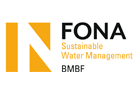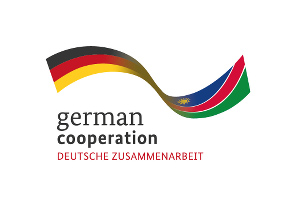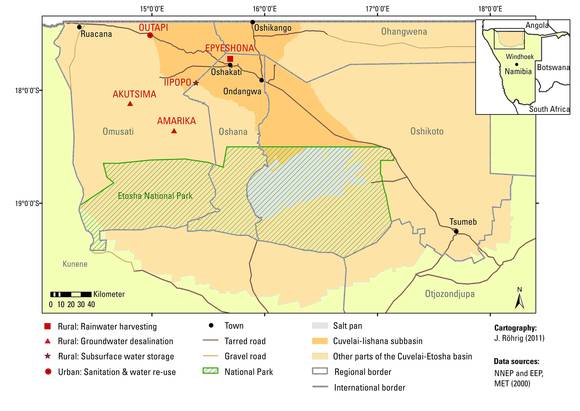The Cuvelai-Etosha Basin
Namibia is the driest country in southern Africa. The Cuvelai-Etosha Basin in central-northern Namibia is particularly affected: With about 850,000 people, almost half the Namibian population lives here, in an area which encompasses only about five per cent of Namibia. The basin is part of a transboundary catchment shared by Angola and Namibia.
A landscape characterized by floods and droughts
The climate in the region is semi-arid and impacted by high rainfall variability which leads to regular droughts and floods. The two main sources of water for this region emanate from Angola: from the upper part of the Cuvelai Basin, and from the Kunene River which belongs to a neighbouring water catchment. The river feeds (with strongly alternating waterlevels) a long-distance canal and a pipeline system which provides drinking water.
Limited access to water
The water supply system – sometimes just consisting of an open canal – provides many of the communities with drinking water. But where this supply network ends, people are dependent on water from hand-dug wells and seasonal flows of shallow surface water streams, the so-called “Iishana” (singular: Oshana). They drain the region from north to south during the rainy season (October to March) and bring water from the southern Angolan highlands to the Etosha pan. Major challenges of using the Oshana water are high evaporation rates and rapid quality degradation of the water due to uncontrolled use by humans and animals. When one contemplates the groundwater, water becomes saltier in lower layers, posing a considerable risk to people’s health. During the dry period, the wells become saltier due to evaporation and hydraulic connection to the saline groundwater. In some places, the salt content of the groundwater is three times higher than seawater. The contamination of the water in the hand-dug wells with algae, faeces and parasites can be significant. Drinking this water can make people sick, especially children.
Additional social factors threat people's wellbeing
These natural challenges are accompanied by population growth, urbanisation, intensive land use and soil degradation. These factors accumulate and threaten people’s livelihood and the balance of the ecosystem.
Additional problems arise from increasing urbanisation and a lack of sanitation facilities. Approximately 40 per cent of the Namibian population in urban areas has no access to improved sanitation facilities. In rural areas and informal settlements, however, the situation is even more dramatic.








